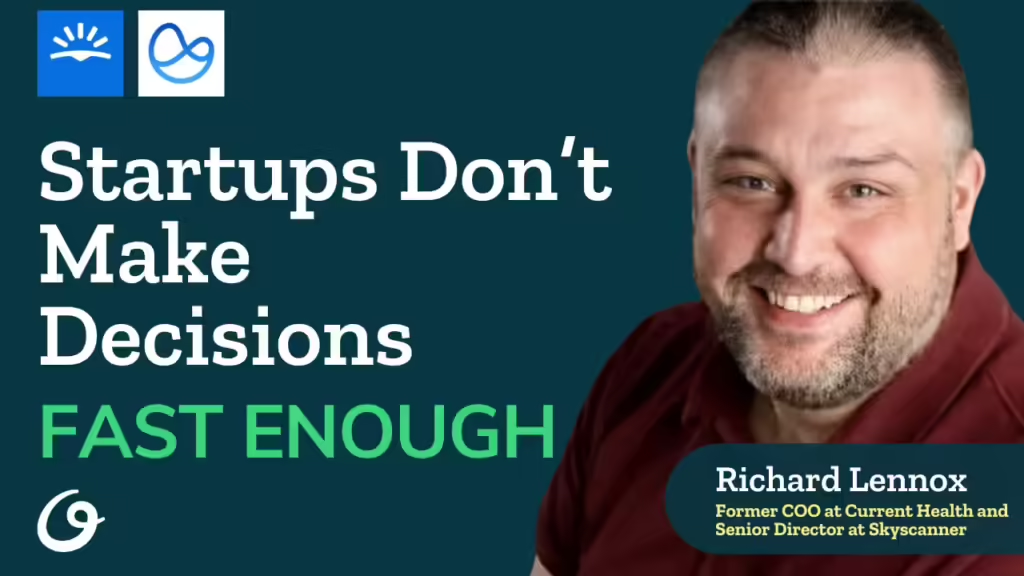Leadership in technology and operations requires a strategic focus on scaling businesses, empowering teams, and driving innovation. Today’s guest, Richard Lennox, exemplifies these qualities as he shares his journey from leading Skyscanner through rapid growth to scaling healthcare innovation at Current Health.
Richard Lennox is an experienced technologist and business leader. As Senior Director at Skyscanner, he led the company’s engineering and operations teams through a pivotal period of scaling, focusing on high-performance teams and continuous delivery. After Skyscanner’s successful exit, Richard transitioned to COO at Current Health, where he helped scale the business, focusing on home healthcare delivery through technology. His leadership experience spans multiple industries, making him a valuable mentor and guide for those navigating startup growth and innovation.

In this episode, host Barry O’Reilly invites Richard to discuss his journey, from his early days at Skyscanner to his role at Current Health. Richard provides insights into scaling startups, the importance of data-driven decision-making, and the operational challenges of growing high-performance teams.
Key Takeaways:
- Customer Value at the Core: Richard emphasizes the importance of focusing on delivering customer value in all areas of business, whether in technology or healthcare. Customer needs should drive product development and operational strategies.
- Scaling High-Performance Teams: Richard discusses how growing from small teams to larger, cross-functional squads allowed for better alignment with business goals at Skyscanner. He shares the challenges and successes of implementing a squad model to foster accountability and autonomy within teams.
- Rapid Decision-Making: Making fast decisions and knowing when to reverse them is critical to maintaining agility in a growing company. Richard stresses the importance of empowering teams to make decisions based on data and customer outcomes.
- Holistic Leadership: Transitioning from a function-specific mindset to a broader business operations perspective allowed Richard to lead with a focus on scaling the entire organization, not just the technology function.
Additional Insights:
Empowering Teams through Data: Richard highlights the value of real-time data in empowering teams to make informed decisions. At Skyscanner, instrumentation of key metrics allowed teams to focus on customer outcomes and make data-driven decisions at scale.
Transitioning from Tech Leadership to Business Leadership: Richard’s journey from Senior Director at Skyscanner to COO at Current Health showcases the evolution from technical leadership to overseeing broader business operations. He reflects on the mindset shift required to focus on business outcomes over functional expertise.
The Future of Healthcare at Home: Richard shares insights into the growing importance of delivering healthcare in the home environment, using technology to monitor patients remotely and operationalizing care at home programs. This innovation is essential for reducing the burden on hospitals and improving patient outcomes.
Episode Highlights:
00:00 – Download free innovation map
00:41 – Introduction to Richard Lennox
03:36 – Early career and decision to join startups
“I got really lucky early on in my career, joining an early startup, which shaped my thinking about delivering value to customers.”
07:48 – Learning from setbacks and focus on customer value
“There has to be a better way to deliver value consistently without causing setbacks for the business.”
14:48 – Rapid decision-making and empowering teams
“I think the tricks for scaling are rapid decision making and how you invert the decision when you make it wrong. The more you hang on to a wrong decision, the worse the impact is.”
24:21 – Richard’s Transition to COO at Current Health and Leading Healthcare Innovation
“Current Health provides a platform to enable care to be delivered at home.”
32:12 – Future of Healthcare at Home and Operational Excellence
“Our job was to operationalize care at home programs, and that required a whole new set of tools and thinking.”
38:06 – Wrap Up















